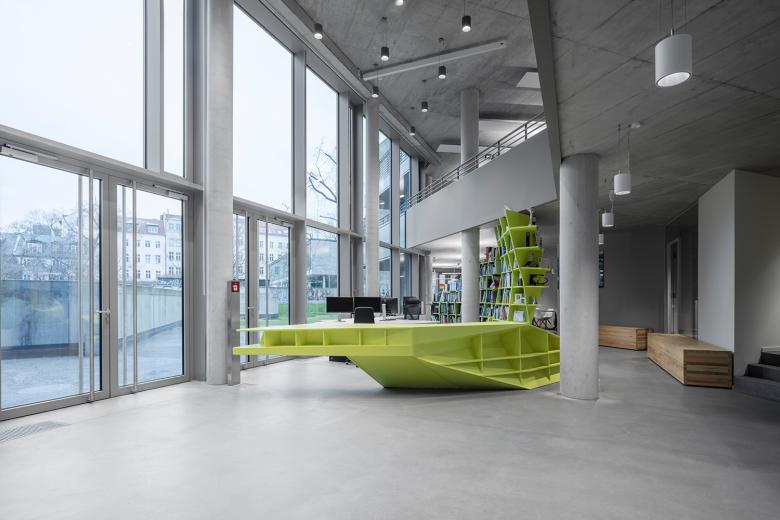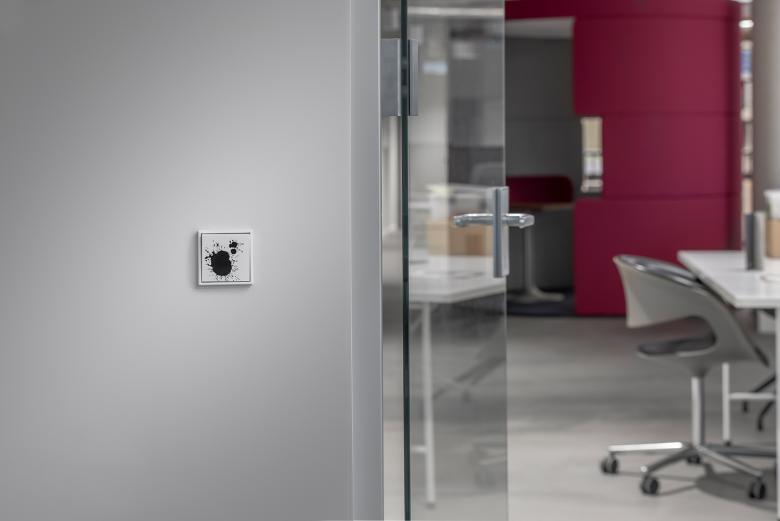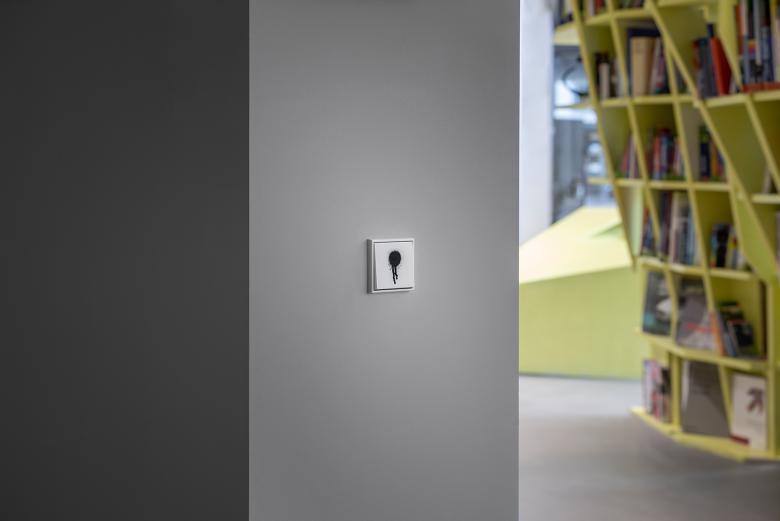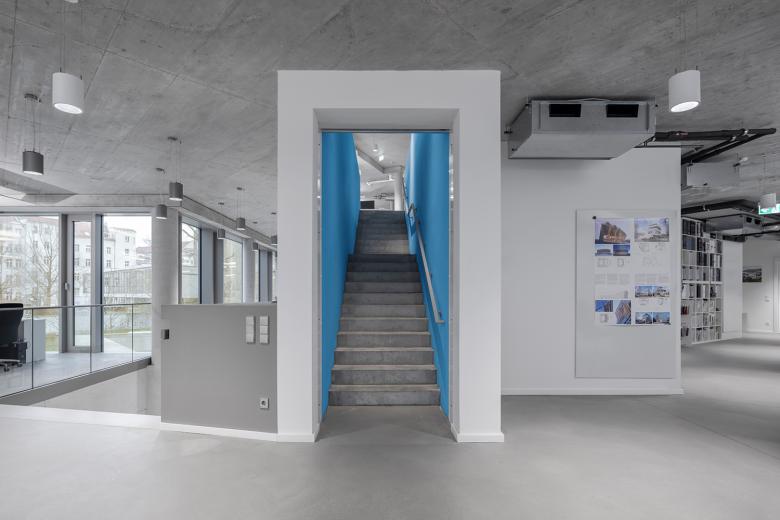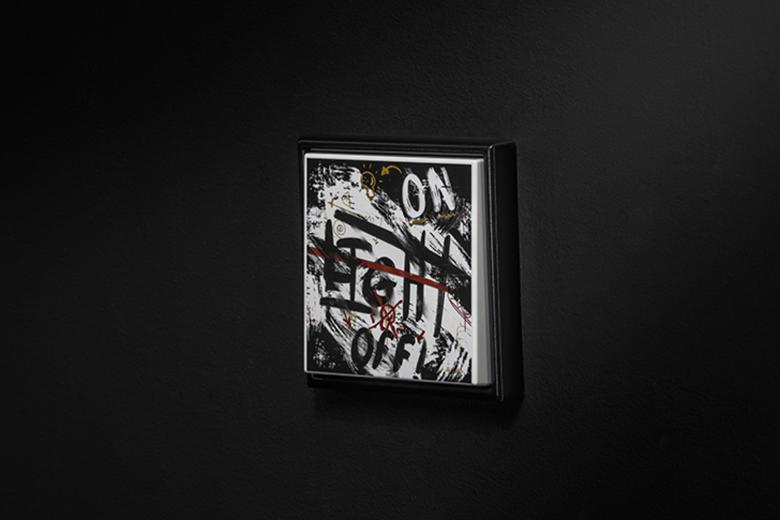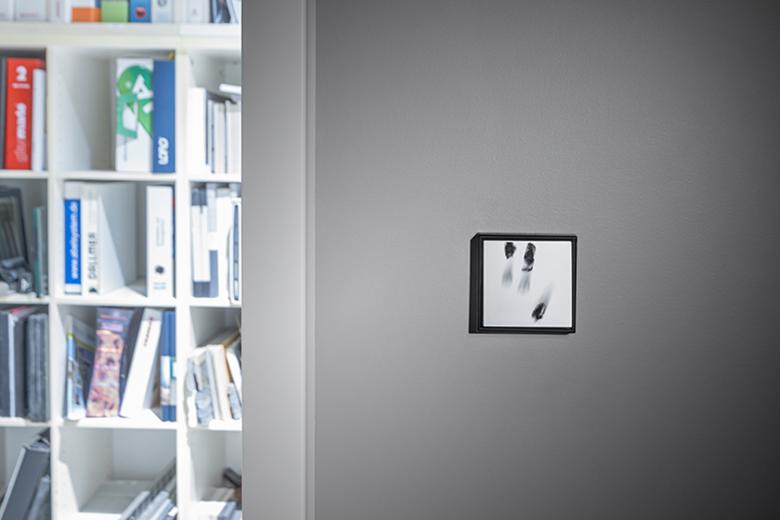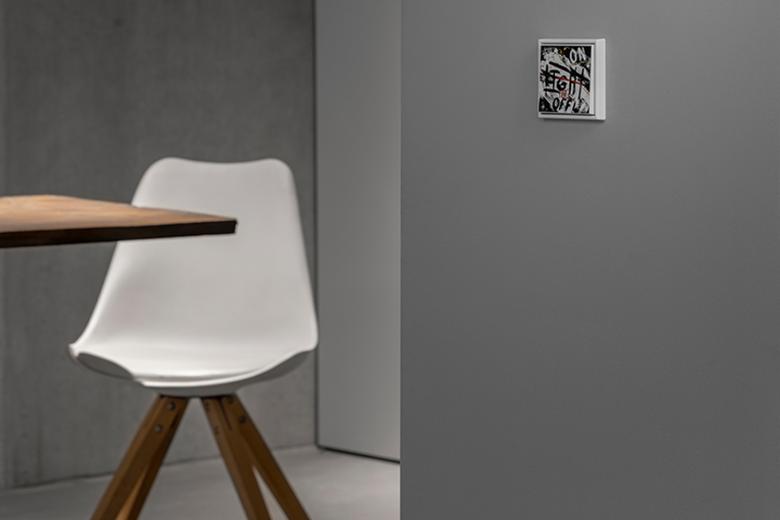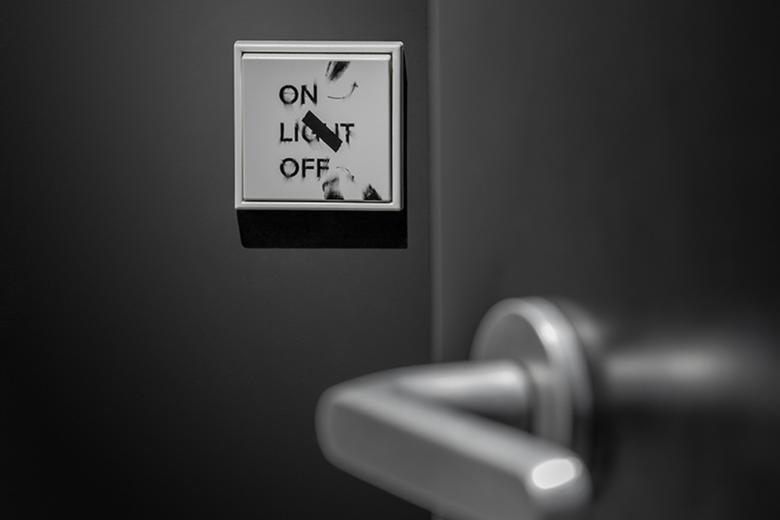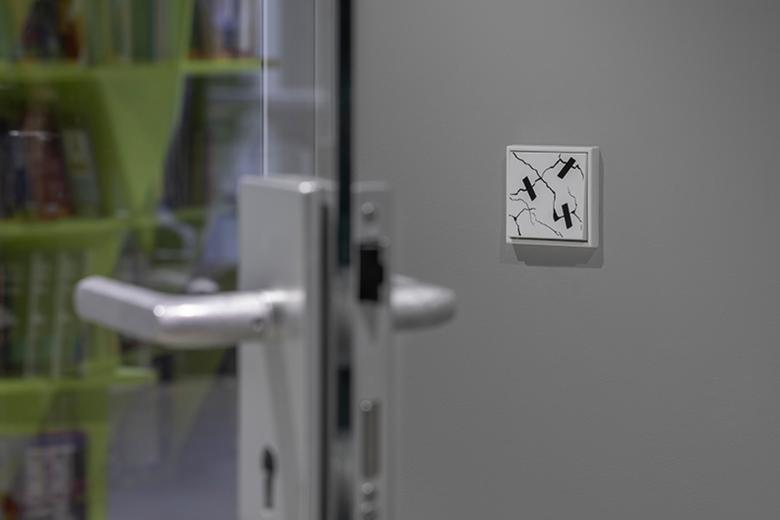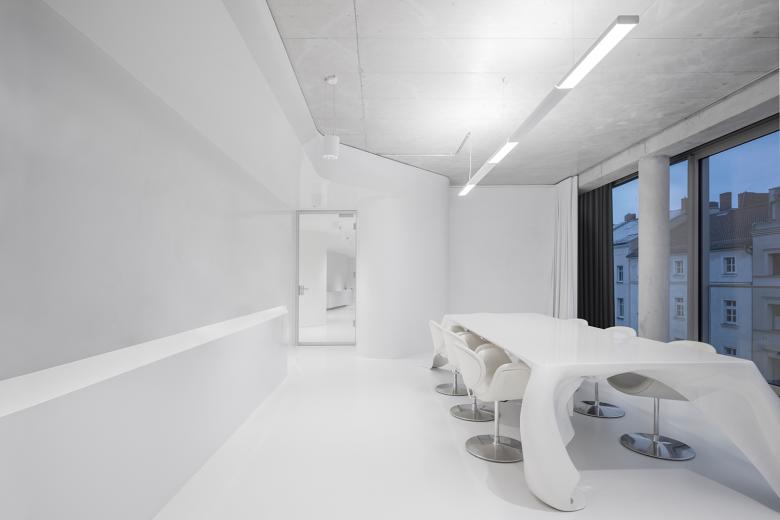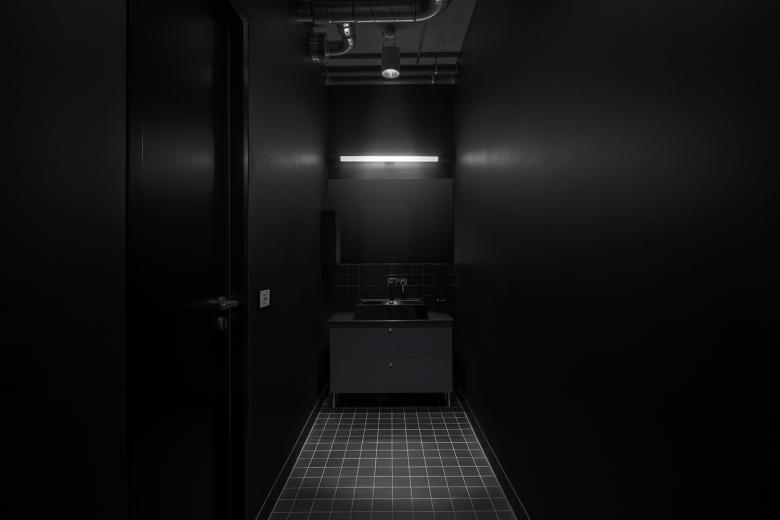Graftlab Headquarters Building
Berlin, Germany
- Manufacturers
- JUNG
- Location
- Berlin, Germany
- Year
- 2024
- Team
- GRAFT, rw+, Schubert GmbH Elektrotechnik
The new headquarters building of the architectural firm GRAFT in the north of Berlin's Mitte district is much more than just offices. The GRAFTLAB is a modern working environment that is characterized by flexibility and cooperation. Since its opening in 2023, concepts for the working of the future have been tested and implemented here – from new ways of working to innovative product design, including the individualized JUNG switch collection JUNG UNIQUE by GRAFT.
The six-storey GRAFTLAB offers space for cooperation between different partners and enables synergies. In addition to office space, other office communities, commercial units and five apartments have also been integrated. From the very start, the goal was to create a mixed and lively community that would also benefit the neighbourhood rather than a monofunctional one. For example, a large staircase in the building is used for presentations by external partners; the interests of the neighbourhood are taken into account when renting out the commercial units; and living and working take place under one roof. Accordingly, the outer shell offers comprehensive transparency with continuous, floor-to-ceiling windows. Especially in the evening hours, the GRAFTLAB with its bustling interior forms a lively contrast to the closed facades of the surrounding existing buildings.
The new building makes impressive use of the difficult geometry of the site on the corner of Invalidenstraße and Ackerstraße. A bent L-shape completes the edge of the block, closing the firewall of the neighbouring buildings and leaving a generous green space at the rear. Its immediate neighbour is the listed building ensemble of the am Weinberg Evangelical congregation which includes a church by Karl Friedrich Schinkel. Situated between the four- to five-storey established buildings and the taller buildings in the neighbourhood, the new building has a cubic shape and staggered height. The folding of the facade also emphasizes its position as a corner building.
GRAFT's offices are spread over three floors, which become a spatial continuum via connected airspaces. The open floor plans are organized around two cores and offer maximum flexibility as regards furniture arrangement. The ground floor opens generously to the green outdoor space. It functions as a common area for employees and is regularly used for events. The first and second floors include open-plan offices, interrupted by zones for exchange and shielded cells for video conferences or telephone calls. On the fourth floor is a bright and flexible conference centre, which is available not only to the employees of GRAFT, but also to the other tenants of the GRAFTLAB as well as external parties.
The interior design throughout the building lives through the power of material and form. Walls, ceilings and columns made of exposed concrete meet screed floors and discreet, white-grey fixtures. Individual pieces of furniture and wall elements in a fresh shade of green, a light blue or strong red guide the eye through the otherwise simple and straightforward interior. In contrast to the lively working floors, the conference centre is kept in pure white – a "blank sheet of paper" that leaves plenty of room for new ideas. On the floors used by GRAFT, the classic switch from the LS 990 range in alpine white was used for the electrical installations. In selected places, its design was individualized with street art and graffiti elements using the JUNG GRAPHIC TOOL. This resulted in the urban switch collection JUNG UNIQUE by GRAFT, which incorporates typical Berlin elements. The custom-designed switches now add special accents to the semi-public common areas on the ground floor, including the reception area, library, lounge and kitchen. In addition, the toilets on all the office floors are designed entirely in black, a tongue-in-cheek homage to the typical Berlin club toilet – naturally with light switches from the JUNG UNIQUE by GRAFT collection with individual graffiti lettering.
The building technology is based on a combination of low- and high-tech. There is no elaborate automatic control system in the building, all windows can be opened manually, and the underground car park is also naturally ventilated. For night-time cooling in the summer, there are supporting ventilators in the building that draw the air into the building from the cool north side. On midsummer days, a ventilation system, which is driven by a biogas-fed combined heat and power plant, aids with cooling. At the same time, the surplus of electricity produced by the system is supplied to the e-charging stations in the underground car park, allowing the energy efficiency of the building to be combined with clean urban mobility.
"The GRAFTLAB is a prototype of a new kind of office building. The diverse mix of uses, the expansion of the working environment into green areas, the individual floor plan design and the variable space available show that heterogeneity is an asset and that experiments are worthwhile," says the GRAFT team happily.
Related Projects
Magazine
-
Doodles on the Rooftop
Today
-
MONOSPINAL
Today
-
Building a Paper Log House
2 days ago
-
Chicago Bears Propose New Lakefront Stadium
2 days ago
-
Building Bridges with Chris Luebkeman
3 days ago
